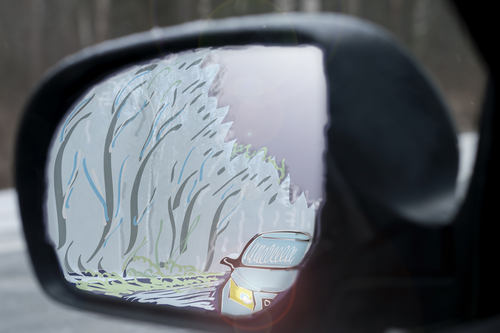On January 8, 2013, Xiaobon Cheng was at work at Keeco LLC, a textile manufacturer in Hayward, California, when he was caught between a loading dock and a semi that was backing onto the dock. The 56-year-old Cheng suffered fatal head injuries.

Sadly, Cheng’s case was not an isolated one. According to the U.S. Bureau of Labor Statistics, backover incidents claimed more than 70 lives nationwide in 2011. The problem has become so pressing that the Occupational Safety and Health Administration (OSHA) has initiated a backover awareness and prevention program. (You can find OSHA’s backover prevention topic page at https://www.osha.gov/doc/topics/backover/index.html.)
Read on to learn who is at risk and how to control this hazard.
Pedestrians at Risk
Whenever employees work on foot in areas where large equipment may be moving, they are at risk—especially when the equipment is moving in reverse. Driver visibility is greatly reduced behind the vehicle, and blind spots can be surprisingly large for some vehicles.
Join us on January 6 for our Workplace Safety webinar to learn more on what to expect from OSHA in 2015—and importantly, how to prepare now! Click here to register now!
Be especially aware of:
- Vehicle blind spots. These hazards can vary from one vehicle to another.
- Problems with backup alarms. On a noisy worksite, workers simply may not distinguish alarms from other workplace noises, or alarms may not function properly.
- Multiple vehicles. Some spotters have been killed while assisting one vehicle because they were not aware that a second vehicle in the vicinity was backing up.
- Riders. Workers who “hitch a ride” on heavy equipment have been known to fall off and be run over.
Controlling Hazards
To protect pedestrians in workplaces where vehicles are present, make sure to:
Create a traffic control plan. Whenever possible, create separate paths for pedestrians and equipment, and clearly mark these travel ways. Traffic control plans can also be used to minimize the need for vehicles to back up.
Use spotters. These workers constantly observe the danger zone and at all times stay in visual or radio contact with equipment operators to help prevent contact between equipment and workers.
Make pedestrians visible. Workers on foot should wear high-visibility clothing.
Enforcement strategies and priorities, regulatory and standard setting, employee/employer and state program outreach—these are some of the keys areas OSHA identified in 2014 as its priorities and strategies for FY 2015. Join us for this safety webinar on January 6th to learn more! Register today!
Make vehicles visible. Because backup alarms can have limited effectiveness on noisy worksites—especially if workers wear hearing protection—equip vehicles with flashing warning lights.
Identify blind spots. Both drivers and pedestrians should know where the vehicles’ blind spots are. For many vehicles, blind-spot diagrams are available that identify obstructions, such as mufflers and engine cowlings, that block operators’ vision. If such diagrams are not available for your vehicles, you should try to map the blind spots yourself.
In some cases, if you can identify what is obstructing a driver’s vision, you may be able to retrofit or redesign equipment to improve visibility.
Improve operator awareness. Operators should, of course, know how to properly adjust and use their mirrors to maximize their field of vision. In addition, consider using technology to reduce blind spots.
Cameras with in-vehicle display monitors and proximity detection devices, such as radar and sonar, can give drivers a better sense of what’s behind them. Tag-based systems that alert drivers when workers are near a vehicle are also available.
In March 2014, the National Highway Traffic Safety Administration (NHTSA) issued a final rule requiring rear visibility technology in all new vehicles under 10,000 pounds by May 2018. This new rule enhances the safety of these vehicles by significantly reducing the risk of fatalities and serious injuries caused by backover accidents.
Keep up with worksite changes. When worksite changes affect travel paths, make sure to update your traffic control plan and travel-way markings to take this into account.
Tune in tomorrow to find out how you can use employee training to minimize backover hazards.
